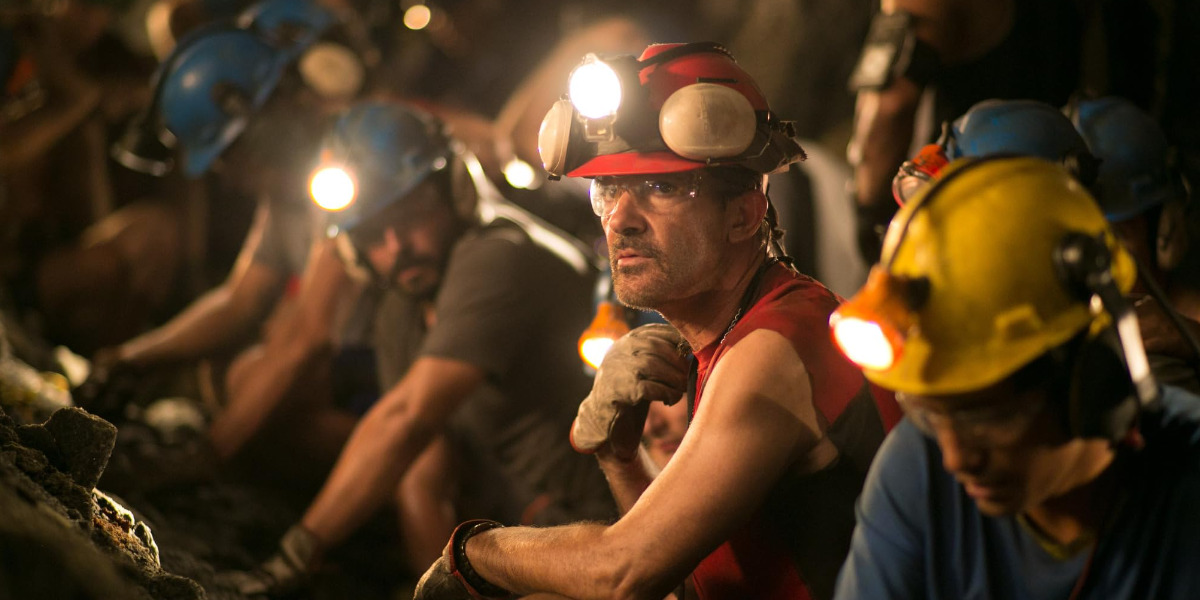Patricia Riggen’s 2015 drama film ‘The 33’ essays the survival story of thirty-three men trapped inside a mine for 69 days. In August 2010, in the San José mine, negligence from the higher-ups led to a catastrophic situation wherein numerous miners from Copiapó, Chile, found themselves trapped inside the collapsing mines. With the only entryway into the mines shut by a boulder, the miners remained entombed for over two months, with minimal supplies to sustain their lives. Meanwhile, on the other side of the boulder, hundreds of people await the men’s return, with the world watching the story unfold on live television.
The film encompasses the deeply individualistic experience that the miners trapped inside San José went through while also highlighting the overarching camaraderie and brotherhood that remained instrumental in everyone’s survival. As a result, given the historically monumental nature of the story and the authenticity with which it is told, you might be wondering about the story’s real-life roots.
2010 Copiapó Mining Accident
‘The 33’ is based on a true story and chronicles the biographical account of the real-life miners who were trapped inside the San José mine on August 5, 2010. In the Atacama Desert of Chile, the first omen of impending doom came as vibrations were felt through the cave walls while miners worked on excavation within the copper-gold mine. Soon, disaster followed as parts of the mine caved in, blocking shut the single passageway outside the caverns.

The boulder outside was 770,000 tons, described as twice in weight to the Empire State Building. When Luis Urzua, the crew’s supervisor, recalled the stone, he said, “It [was] like the stone they put over Jesus’s tomb.” Thus, the man perfectly encapsulated how the life and death complications proposed by the bolder must have exponentiated its physical weight at the moment.
Within the mine’s walls, the workers remained trapped with only scant food and water resources. Urzua abdicated his supervisory role, encouraging equality among all thirty-three men. As such, despite the grave circumstances, these men continued to fight for their survival, rationing the food supply and surviving on two cookies paired with a spoonful of tuna fish every day.
More than two weeks after the workers’ initial entrapment, on August 22, the authorities were able to lower down a probe to which the workers tied a note that read, “We are fine in the shelter, the 33 of us,” in Spanish. The authorities had numerous plans in motion to rescue the miners underground, and the international coverage that the incident received certainly helped ensure diligence, holding everyone responsible.
Likewise, the families of the workers outside stood their ground in their makeshift camps dubbed “Campo Esperanza,” which translates to Camp Hope. Even when no assurance could be provided about the men’s lives and safety, their close ones— estimated almost 300 in number— refused to give up faith.
During this time, Mario Sepulveda Espinace, whose role Antonio Banderas portrays in the film, became the public face of his crew through his regular video logs meant to share their status with the world. Ultimately, on October 13, the first miner, Florencio Antonio Avalos Silva, was rescued and brought back to the surface, followed by all 32 of his crewmates.
The Filmmaker’s Thorough Research
Since the film’s early development, the creators knew they wanted to bring hard-earned authenticity to the screen and share the stories of all thirty-three men and their families in earnest. Antonio Banderas, the film’s leading man, saw the events unravel in real-time from his television screen alongside his teenage daughter. Thus, the actor shared the collective emotion with every other viewer, survivor, their families, and others.

“I remember feeling emotional the day the miners were coming out,” recalled Banderas in a conversation with Independent. “Not just because of them, but because I knew many millions of people like me were watching television with one idea in their minds – the supreme value of life.”
Consequently, Banderas was all about remaining faithful to reality and depicting his character, Mario Sepúlveda, with the utmost sincerity. From losing weight to showcase declining health to living in motels without hot water, followed by performing demanding scenes on freezing sets, Banderas and the rest of the film’s crew put themselves through every necessary situation.
“It brings an incredible realism to the entire story that we were tired, cold, and dirty beyond belief— two months after we finished the movie, I was still getting dirt out of my ears,” shared Banderas.
Furthermore, the film’s director, Patricia Riggen, also dove into deciphering the real-life former San José miners and their lives to get a good understanding of how to project it onto the screen. “I spent a lot of time with them,” said Riggen. “I met with each of them privately to really hear their experiences.” In the end, all the miners ended up participating in the film as extras while also bestowing their firsthand experience to the crew whenever needed. As such, ‘The 33,’ a biographical drama film, maintains a remarkable similarity to an inspirational true story.
Read More: Best True Story Movies on HBO Max


You must be logged in to post a comment.